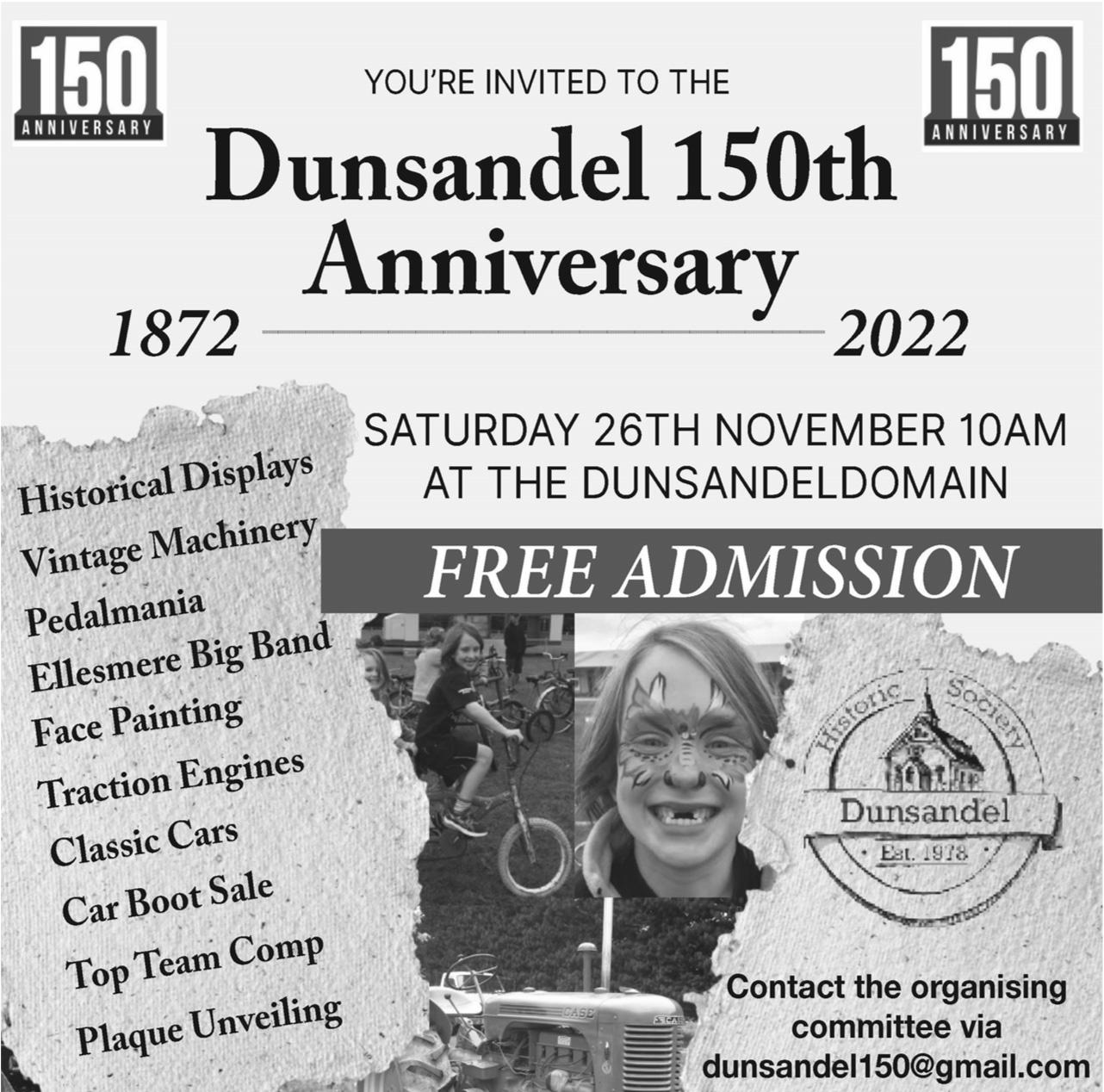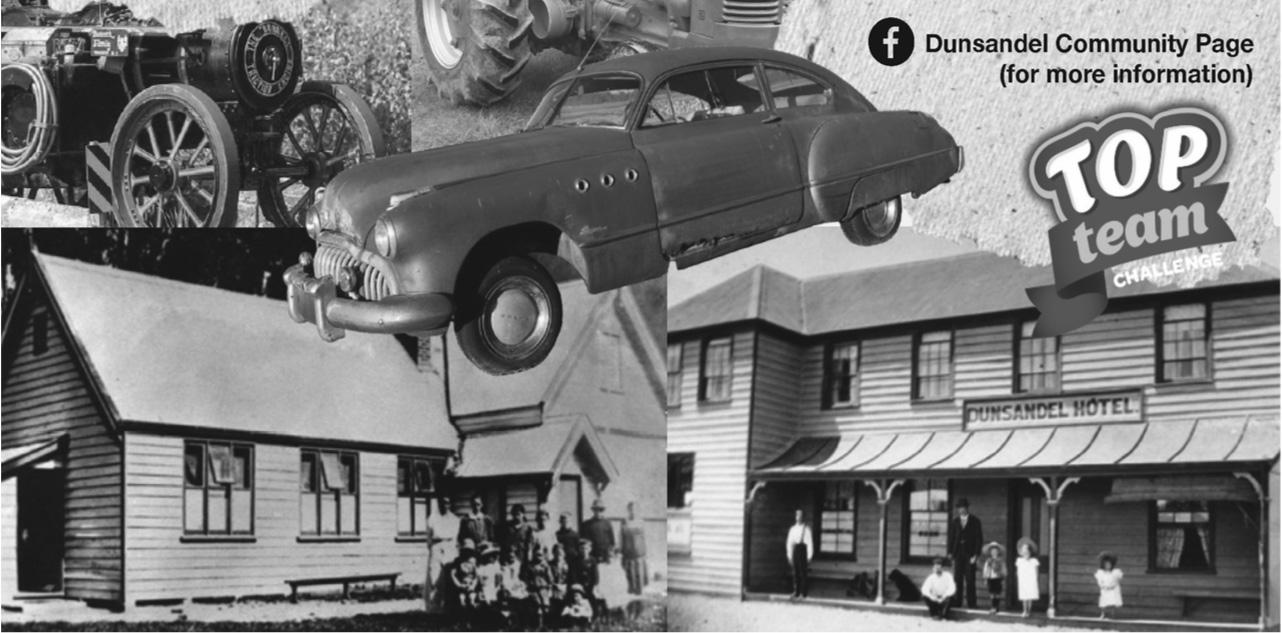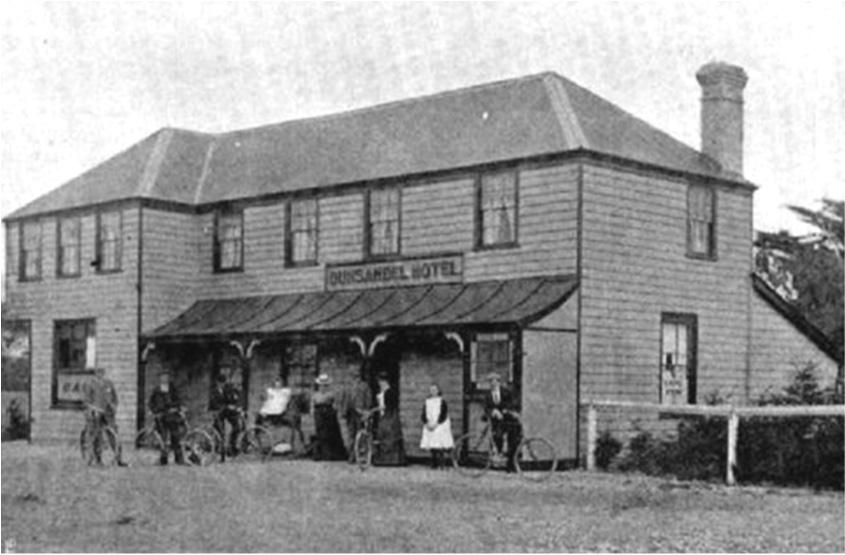
3 minute read
Dunsandel Celebrating 150 Years
TAB Gaming Widescreen TVs Accommodation Kiwi Liquor Café Courtesy Bus
CHECK OUT OUR XMAS MENU
Advertisement
Phone (03) 318 8325
darfieldhotel99@gmail.com www.darfieldhotel.co.nz Dunsandel has joined the list of sesquicentennial towns, and are celebrating 150 years on the 26th of November, in the Dunsandel Domain, which everyone is welcome to attend. Selwyn Town had been situated, in 1862, on the banks of the Selwyn River on either side of the southern railway reserve, but the train never arrived for another five years. In 1867, the town became the rail terminus for six years before the line was extended by 1873, across the Rakaia River and Dunsandel was established a few kilometres along the line, out of reach of flooding. Actually, Dunsandel had started in about 1871, when a blacksmith’s shop was established alongside the Railway Reserve at the crossroads to Southbridge and the Hororata District. Also, two gentlemen, one who had an existing shop and the other who was proposing to build a hotel, argued for a liquor licence at what was known as ‘Killinchy Crossing’ before it was named ‘Dunsandel’. The hotel proprietor won as he promised to provide accommodation. Many people and their businesses moved from Selwyn to the new town, including the owners of a general store. There was rapid progress in the next two years, and with a Government grant, a library and reading room was built, and this served as a hall until it became too small and was replaced in 1929. This second hall was replaced after the earthquakes by a community centre in the domain, which itself started life as a reserve. There were two initial subdivisions, one on either side of the railway line. Initially, the whole town was in one Road Board, but early on the boundary was moved to the railway line, and the town was split between two authorities. This, for example, made collecting funds for the second hall difficult as it was to be built in one county, but some of the money had to come from another county. Schooling was a problem as a school (Upper Selwyn) had been established on what was the Great South Road, but it was a long way away for children to journey, especially in bad weather, so there was a push for a school in the town. This never happened until 1879, and while the residents wanted it to be sited in a reserve adjacent to the railway line, the authorities caused the Dunsandel School to be built nearly as far to the east as the Selwyn School was west. The first hotel almost lasted until the 1900s and was replaced by the disused Selwyn Town Hotel, which was dragged to Dunsandel with some difficulties. The first railway station must have been a primitive affair, and the ladies had to wait a year for a waiting room. The replacement station was opened in 1902 and served as the post office for many years until a new building was opened, and the 1975 NW storm finished off the station. The community has been united by many sporting and cultural groups that have been formed and died over the years. Music has been of greater importance in Dunsandel than in many other towns, and a thirty person choir was in action within a year of the town’s formation. Religion has also been important, but Dunsandel was slower than some other towns in that two of the three initial churches were not opened until the 1900s. Now there is one combined church. Until World War 2, housing developed in pockets, but with a subdivision being developed presently, there is now only one part of the town separated by paddocks. From the start, with the railway operating, travelling to major centres has been easier than experienced by many towns, and with the opening of a road bridge over the Selwyn River and the sealing of the road, road transport has taken over from passenger rail traffic. Unfortunately, today the heavy traffic on SH1 makes it difficult to move around the town. As you can see, while the people of Dunsandel and the surrounding farms have been a united community with much community spirit, external influences have made that unity a challenge to maintain. Mike Noonan.







